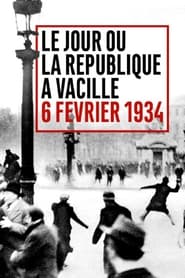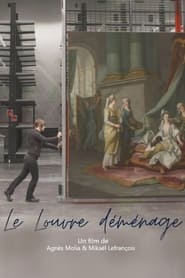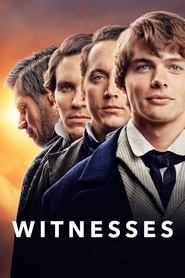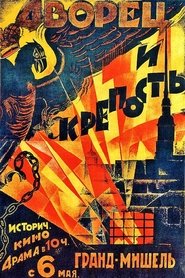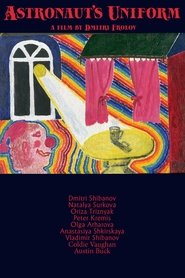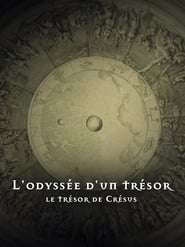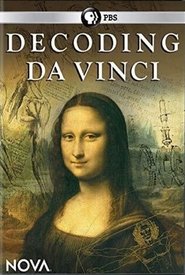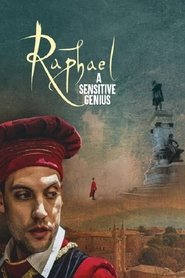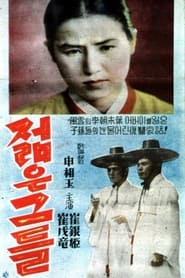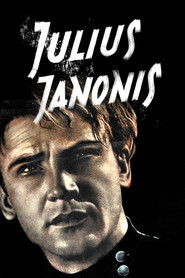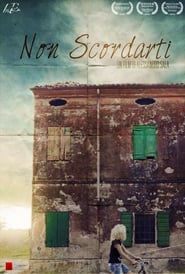Top Rated History Movies - Page 330
-
Le Louvre déménage
2020
-
Witnesses
2021
Witnesses
2021
star 1David Whitmer, Oliver Cowdery and Martin Harris face ridicule and persecution when they claim to have seen angels and hefted golden plates containing ancient inscriptions. -
The Palace and the Fortress
1924
star 3An adaptation of Olga Frosh's novel about the life of Mihail Beideman. -
Astronaut's Uniform
2021
Astronaut's Uniform
2021
star 10Mockumentary experimental film, which shows one day in the life of a young man. The action takes place on the Day of Soviet Cosmonautics, April 12, one of the last years of the USSR. Outside the window, it is gradually getting warmer, the onset of spring is felt, promising hope for the possibility of changes in the country. The hero of the film is fond of space. The young man, who idolizes Gagarin, is engaged in reconstruction, making the uniform in which the cosmonaut walked in the prime of his glory. Our hero is also a film enthusiast. He makes films with stories of space flights and shows them to his friends. The film is stylized as amateur films of the 1980s and was shot on a 16-mm color film made by the company" Svema", made in the Soviet Union. The quality of this film allows the viewer to fully immerse themselves in the atmosphere of the time of the film, which is dedicated to Soviet cosmonautics and Edward D. Wood Jr. -
The Odyssey of Priam's Gold
2020
star 8.5From the plains of the Troade, to the cellars of a Nazi bunker, to the dark basements of Moscow's largest museum. With Homer and in the footsteps of the extremely wealthy businessman Heinrich Schliemann, we follow the true odyssey of the treasure of Priam which spans over more than 3 millennia. -
Stonehenge: The Lost Circle Revealed
2021
star 7.5Professor Alice Roberts follows a decade-long historical quest to reveal a hidden secret of the famous bluestones of Stonehenge. Using cutting-edge research, a dedicated team of archaeologists led by Professor Mike Parker Pearson have painstakingly compiled evidence to fill in a 400-year gap in our knowledge of the bluestones, and to show that the original stones of Britain’s most iconic monument had a previous life. Alice joins Mike as they put together the final pieces of the puzzle, not just revealing where the stones came from, how they were moved from Wales to England or even who dragged them all the way, but also solving one of the toughest challenges that archaeologists face. -
The Unfinished Journey
1999
star 6A short about American life and history produced for the millennium New Year's Eve celebration. -
NOVA: Decoding da Vinci
2019
star 7.5Leonardo da Vinci was a Renaissance genius. Not only did he paint masterpieces of art, but he was an obsessive scientist and inventor, dreaming up complex machines centuries ahead of his time, including parachutes, armored tanks, hang gliders and robots. On the 500th anniversary of Leonardo’s death, with the help of biographer Walter Isaacson, NOVA investigates the secrets of Leonardo’s success. How did his scientific curiosity, from dissections of cadavers to studies of optics, shape his genius and help him create perhaps the most famous painting of all time, the "Mona Lisa"? -
Raphael - A Sensitive Genius
2021
star 5A documentary that restores to the world, five hundred years after his death, the universal and sensitive genius of one of the greatest artists of the Italian Renaissance: Raphael Sanzio. Guided by the art historian Luca Tomìo, we decided to start our journey from the Renaissance atmosphere of Raphael’s birthplace, the Duchy of Urbino, to retrace, from the very beginning, Raphael's artistic education. From a young age, he found himself confronted with giants of the Renaissance art such as Piero della Francesca and Antonio del Pollaiolo, in the workshop of his father Giovanni Santi, also an excellent painter of the Urbino court. -
The Youth
1955
The Youth
1955
star 5In the latter years of the Korean Empire, Lee In Hwa, disguises herself as a man so she can join a group of young men determined to overthrow the colonial government. They fight together with young national activists presided by Hwal Min and supported by Daewon-gun, the Prince Regent, against Min Gyeom Ho and his peers. But Min and his team perform a surprise attack on Hwal Min and his peers. -
Air Girl
2021
Air Girl
2021
star 7Komari Sano's parents ran a small Tokyo factory that manufactured aircraft parts. With her parents' influence, Komari Sano dreamed of becoming a pilot. During World War II, her older brother died as a kamikaze pilot and her parents died during the bombing of Tokyo. Komari Sano became an orphan and lived with her aunt. Her aunt ran a ryotei (high end traditional restaurant). After the war, all aerial activities were initially banned in Japan. After long negotiations with the Supreme Commander of the Allied Powers, Sizuo Matsuki, who is the security chief of Civil Aviation Bureau, finally launched Japan's civil aviation. Komari Sano applies for the position of a cabin attendant. -
Julius Janonis
1959
Julius Janonis
1959
star 7Early twentieth century. The future poet, the nurturer of lyrics of love, Julius Janonis, is maturing among the students of Šiauliai Gymnasium. The son of a poor peasant, sick with tuberculosis, spotted a classmate, Milda, from a wealthy family admiring his talent. Unfortunately, at a high society party held at Milda’s parents house, where Julius reads his poems, guests make fun of the poet. When World War I comes, Janonis is taken to Voronezh, to the Lithuanian diaspora. -
Kampf auf der Bosporus-Brücke - Die Türkei und der gescheiterte Putschversuch
2021
star 6.5The night of July 15, 2016 changed the history of Turkey. On that day there were coordinated attacks by parts of the Turkish army, among others in Istanbul. The aim of the military: a coup against the government. The decisive confrontation occurred on the Bosporus Bridge. While President Erdogan was still on vacation, live at TV he called on the people who were devoted to him to stand against the military. As an enemy for the masses, he presented his adversary Fethullah Gülen, whom he branded as the coup leader. He also urged the imams of the country's mosques to condition the population to resist. And so it happens that at night thousands of agitated people take to the streets to oppose the armed insurgents. The death toll was high. 352 people died across Turkey during the attempted coup. The consequences are even more serious: Erdogan used this gift, as he called it himself, to undermine democracy, to arrange mass arrests of dissidents and to transform Turkey into a dictatorship. -
A Place of Our Own
2014
-
The Red Orchestra
2020
The Red Orchestra
2020
star 7.5This documentary re-examines the story of the Red Orchestra: the most important resistance network in Nazi Germany, whose operations extended from Berlin and Brussels to Paris.
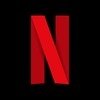 Netflix
Netflix
 Amazon Prime Video
Amazon Prime Video
 Apple iTunes
Apple iTunes
 Apple TV Plus
Apple TV Plus
 Disney Plus
Disney Plus
 Google Play Movies
Google Play Movies
 Paramount Plus
Paramount Plus
 Hulu
Hulu
 HBO Max
HBO Max
 YouTube
YouTube
 fuboTV
fuboTV
 Peacock
Peacock
 Peacock Premium
Peacock Premium
 Amazon Video
Amazon Video
 The Roku Channel
The Roku Channel
 AMC+
AMC+
 Kocowa
Kocowa
 Hoopla
Hoopla
 The CW
The CW
 Vudu
Vudu
 Starz
Starz
 Showtime
Showtime
 PBS
PBS
 Pantaflix
Pantaflix
 FXNow
FXNow
 Tubi TV
Tubi TV
 Kanopy
Kanopy
 Comedy Central
Comedy Central
 Crunchyroll
Crunchyroll
 Microsoft Store
Microsoft Store
 Redbox
Redbox
 Sun Nxt
Sun Nxt
 ABC
ABC
 DIRECTV
DIRECTV
 Crackle
Crackle
 Fandor
Fandor
 Plex
Plex
